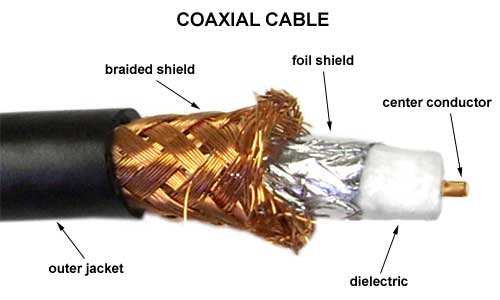Computer network
A PC system or information system is an information transfers system which permits PCs to trade information. In PC systems, arranged figuring gadgets trade information with each other utilizing an information join. The associations between hubs are set up utilizing either link media or remote media. The best-known PC system is the Internet.
System PC gadgets that start, course and end the information are called system hubs. Hubs can incorporate has, for example, PCs, telephones, servers and systems administration equipment. Two such gadgets can be said to be arranged together when one gadget can trade data with the other gadget, regardless of whether they have an immediate association with each other.
PC systems vary in the transmission medium used to convey their signs, the correspondences conventions to sort out system activity, the system's size, topology and hierarchical purpose.
PC systems bolster a huge number of uses, for example, access to the World Wide Web, video, computerized sound, shared utilization of use and capacity servers, printers, and fax machines, and utilization of email and texting applications and numerous others. Much of the time, application-particular correspondences conventions are layered (i.e. conveyed as payload) over other more broad interchanges conventions.
History
See likewise: History of the Internet
The sequence of noteworthy PC system advancements incorporates:
In the late 1950s early systems of PCs incorporated the military radar framework Semi-Automatic Ground Environment (SAGE).
In 1959 Anatolii Ivanovich Kitov proposed to the Central Committee of the Communist Party of the Soviet Union a point by point arrangement for the re-association of the control of the Soviet military and of the Soviet economy on the premise of a system of registering focuses.
In 1960 the business aircraft reservation framework self-loader business research environment (Saber) ran online with two associated centralized servers.
In 1962 J.C.R. Licklider built up a working gathering he called the "Intergalactic Computer Network", a forerunner to the ARPANET, at the Advanced Research Projects Agency (ARPA).
In 1964 specialists at Dartmouth College built up the Dartmouth Time Sharing System for circulated clients of vast PC frameworks. That year, at Massachusetts Institute of Technology, an examination bunch upheld by General Electric and Bell Labs utilized a PC to course and oversee phone associations.
All through the 1960s, Leonard Kleinrock, Paul Baran, and Donald Davies autonomously created system frameworks that utilized bundles to exchange data between PCs over a system.
In 1965, Thomas Marill and Lawrence G. Roberts made the primary wide region system (WAN). This was a quick antecedent to the ARPANET, of which Roberts got to be system supervisor.
Additionally in 1965, Western Electric presented the primary generally utilized phone switch that executed genuine PC control.
 In 1969 the University of California at Los Angeles, the Stanford Research Institute, the University of California at Santa Barbara, and the University of Utah got to be associated as the start of the ARPANET system utilizing 50 kbit/s circuits.
In 1969 the University of California at Los Angeles, the Stanford Research Institute, the University of California at Santa Barbara, and the University of Utah got to be associated as the start of the ARPANET system utilizing 50 kbit/s circuits.
In 1972 business administrations utilizing X.25 were conveyed, and later utilized as a hidden foundation for extending TCP/IP systems.
In 1973, Robert Metcalfe composed a formal reminder at Xerox PARC depicting Ethernet, a systems administration framework that depended on the Aloha system, created in the 1960s by Norman Abramson and partners at the University of Hawaii. In July 1976, Robert Metcalfe and David Boggs distributed their paper "Ethernet: Distributed Packet Switching for Local Computer Networks" and worked together on a few licenses got in 1977 and 1978. In 1979 Robert Metcalfe sought after making Ethernet an open standard.
In 1976 John Murphy of Datapoint Corporation made ARCNET, a token-passing system initially used to share stockpiling gadgets.
In 1995 the transmission speed limit for Ethernet expanded from 10 Mbit/s to 100 Mbit/s. By 1998, Ethernet upheld transmission rates of a Gigabit. Along these lines, higher rates of up to 100 Gbit/s were included (starting 2016). The capacity of Ethernet to scale effortlessly, (for example, rapidly adjusting to bolster new fiber optic link rates) is a contributing variable to its proceeded with use.
System joins
The transmission media (regularly alluded to in the writing as the physical media) used to connection gadgets to shape a PC system incorporate electrical link (Ethernet, HomePNA, power line correspondence, G.hn), optical (fiber-optic correspondence), and radio waves (remote systems administration). In the OSI model, these are characterized at layers 1 and 2 — the physical layer and the information join layer.
A broadly received group of transmission media utilized as a part of neighborhood (LAN) innovation is by and large known as Ethernet. The media and convention gauges that empower correspondence between arranged gadgets over Ethernet are characterized by IEEE 802.3. Ethernet transmits information over both copper and fiber links. Remote LAN guidelines (e.g. those characterized by IEEE 802.11) use radio waves, or others use infrared signs as a transmission medium. Power line correspondence utilizes a building's energy cabling to transmit information.








